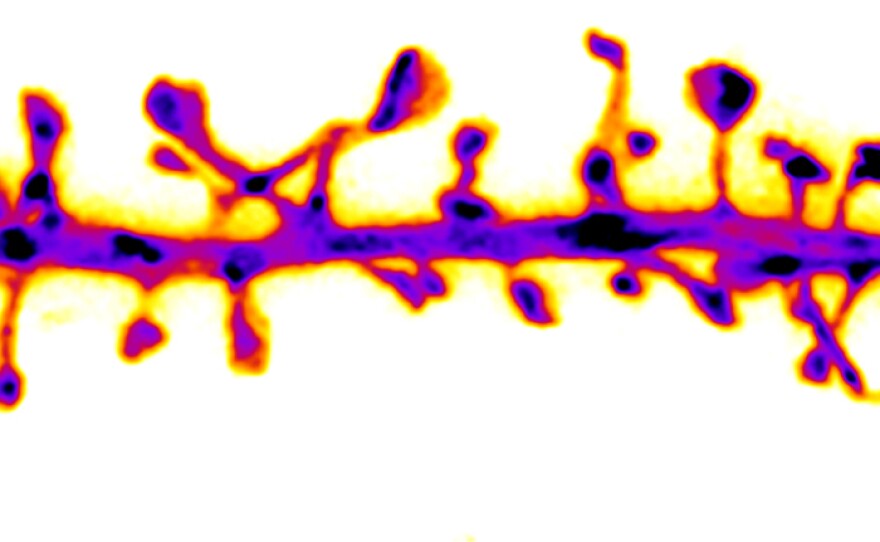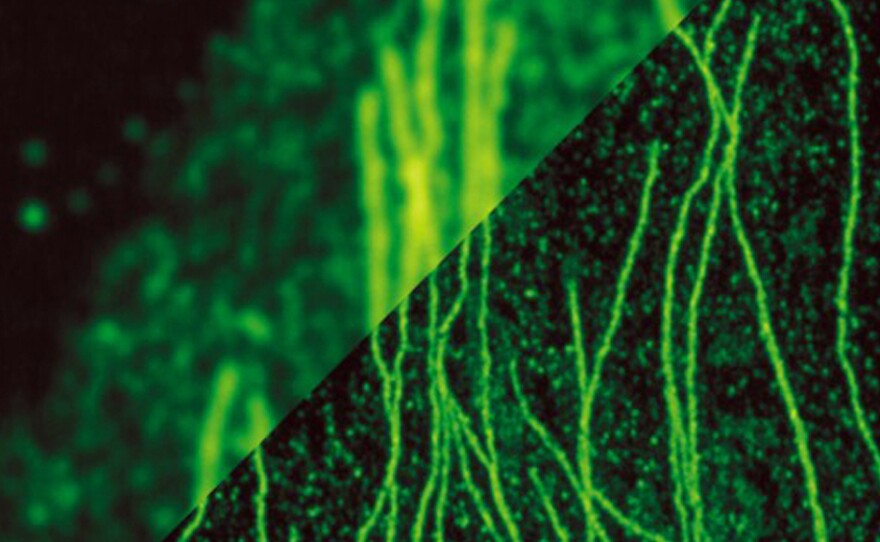




The Nobel Prize for chemistry just went to a team that discovered a better way to take a picture. Really.
Eric Betzig, Stefan W. Hell and William E. Moerner received about $1.1 million and a lifetime of adding "Nobel Prize winner" to their biographies for creating a new way for scientists to look at living cells — peering closer than ever before, or even thought possible.
The method, called super-resolved fluorescence microscopy, is based on the principles behind two separate techniques: Simulated emission depletion (STED) microscopy, which uses a laser to light up molecules in certain areas of the cell, and single-molecule microscopy, which stacks together many images of fluoresced molecules to reveal fine details.
The approach offers scientists new ways to study how molecules move inside living cells. It could eventually help researchers better understand the connections among nerve cells in the brain, or among proteins involved in diseases like Parkinson's, Alzheimer's and Huntington's.
Since the development of basic techniques behind super-resolved microscopy in 2000 (STED) and 2006 (single-molecule), many researchers have used variations of the method to create their own detailed images. And if you're itching to try, you can too — just don't expect a Nobel Prize for it. Here's Shots' guide to making your own:
Copyright 2014 NPR. To see more, visit http://www.npr.org/.






